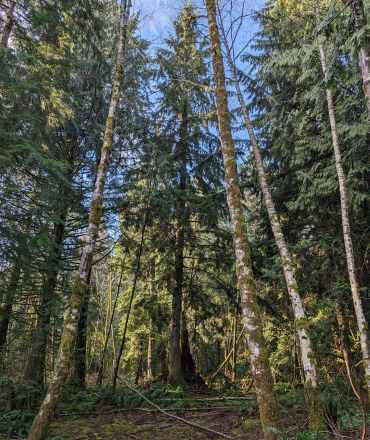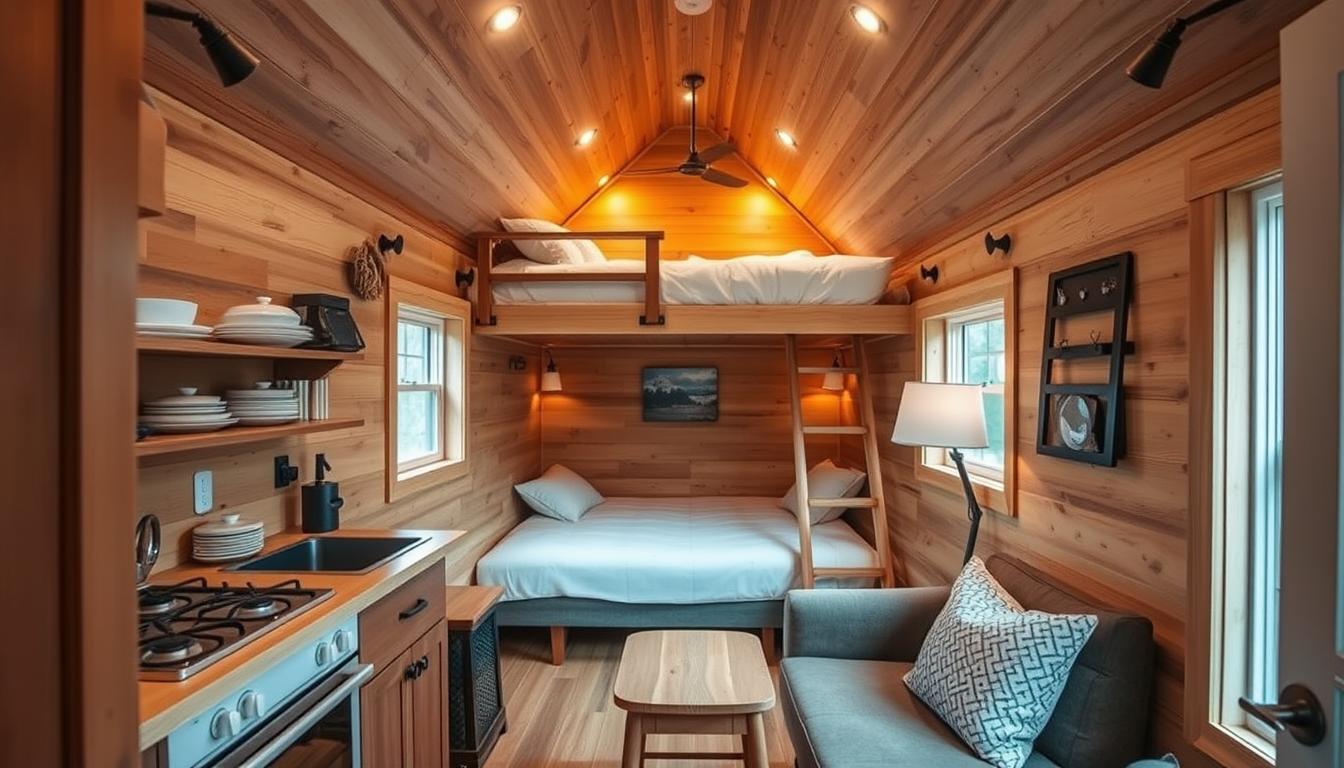Living in tiny houses has gained popularity due to their sustainable and affordable nature. These compact living spaces offer simplicity, efficiency, and a closer connection to nature. If you’re considering placing a tiny house on land, here is a comprehensive guide to help you through the process.
Learn to Put a Tiny House on Land
- Research local zoning laws and regulations.
- Find suitable land and prepare it properly.
- Obtain necessary permits and choose the right foundation before transporting and securing the tiny house on the land.
Placing a tiny house on land involves several crucial steps that require planning and preparation for a successful placement. In this detailed guide, we will walk you through each step to ensure a smooth and well-executed process.
Researching Local Zoning Laws and Regulations
Before placing a tiny house on land, it is essential to understand and adhere to local zoning laws and regulations. These laws dictate land use and building regulations, and non-compliance can lead to fines or house removal. Research local regulations through the planning or zoning department, city or county websites, or seek professional advice to ensure a smooth process.
Tips on Finding Local Regulations Information:
- Visit the official city or county website for zoning ordinances.
- Consult with a local real estate agent or land use attorney.
- Attend zoning board meetings for valuable insights.

Finding Suitable Land
Choosing the right land for your tiny house is crucial. Factors like access to amenities, adherence to zoning regulations, and feasibility for a tiny house are essential considerations. Conduct land surveys by professionals to determine suitability and compliance with regulations, minimizing the risk of legal issues.
Tips for Land Surveys and Evaluations:
- Hire a licensed surveyor for property assessment.
- Check for environmental concerns or land restrictions.
- Consider proximity to essential services like grocery stores and hospitals.

Preparing the Land for a Tiny House
Land preparation is a vital step in the process of placing a tiny house. This includes site clearing, utility installations, and creating a sturdy foundation. Ensure compliance with local regulations by hiring professionals for tasks such as site clearing and utility installations.
Obtaining Necessary Permits for a Tiny House Placement
Placing a tiny house typically requires various permits to meet building codes and safety standards. These permits include zoning, building, and utility connection permits. To navigate the permit process smoothly, consult with local building officials, prepare detailed documentation, and allow ample time for approval before construction.
Tips for Permit Application Process:
- Consult with a local building official for permit requirements.
- Prepare detailed plans for the permit application.
- Allow enough time for permit approval before construction begins.
Real-Life Experience: Overcoming Zoning Challenges to Place a Tiny House
Sarah’s Zoning Struggle
Sarah, a passionate advocate for sustainable living, purchased a beautiful piece of land to fulfill her dream of living in a tiny house. Excitement turned to frustration when she discovered the local zoning laws posed a significant challenge to her plans. The area had strict regulations on minimum square footage for residential structures, making it seem impossible to place her tiny house there.
Seeking Solutions
Undeterred, Sarah decided to tackle the zoning issue head-on. She researched local ordinances, scheduled meetings with zoning officials, and even attended town planning hearings to present her case. By showcasing the environmental benefits of tiny house living and emphasizing her commitment to being a responsible member of the community, Sarah was able to secure a variance for her tiny house.
Success and Lessons Learned
After months of perseverance, Sarah finally placed her tiny house on the land she had lovingly chosen. Her experience taught her the importance of thorough research, persistence, and community engagement when navigating zoning challenges. Sarah’s story is a testament to the fact that with determination and a clear strategy, overcoming zoning obstacles to place a tiny house on land is indeed possible.

Choosing the Right Foundation for Your Tiny House
Selecting the appropriate foundation for your tiny house is crucial for its stability and longevity. Options like concrete slabs, crawl spaces, and trailer foundations have their pros and cons, depending on factors like soil type, climate, and budget.
Pros and Cons of Different Foundation Options:
| Case Study Title | Location | Foundation Type | Challenges Faced | Solutions Implemented |
|---|---|---|---|---|
| Eco-Friendly Tiny Living | Oregon, USA | Concrete Slab | Soil Permeability | Added drainage system |
| Mobile Minimalism | California, USA | Trailer | High Winds | Installed additional anchors |
| Off-Grid Oasis | British Columbia, Canada | Crawl Space | Cold Climate | Upgraded insulation |
| Foundation Type | Pros | Cons |
|---|---|---|
| Concrete Slab | Provides stability | Costly to install |
| Crawl Space | Easy utility access | Prone to moisture issues |
| Trailer | Offers mobility | Requires additional anchoring |
Transporting and Placing the Tiny House on Land
After land preparation and permit acquisition, the next step is moving and placing the tiny house securely. Professional assistance is recommended for safe placement, involving the careful movement of the house to the site and securing it on the foundation.
Tips for Placing the Tiny House Securely:
- Use leveling jacks for adjustment.
- Secure the house to the foundation with anchor bolts or straps.
- Perform a final inspection for levelness and stability.

Connecting Utilities to Your Tiny House on Land
Connecting water, electricity, and sewage is essential for a comfortable living experience in a tiny house. Proper installation by licensed professionals is vital for safety and compliance with building codes.
“Proper planning and research are key to a successful placement of a tiny house on land.”
Incorporating insights and experiences from individuals who have gone through the process, providing background information on the author’s expertise, and including real-life examples or case studies of successful tiny house placements can enhance the credibility, expertise, and engagement levels of this guide.
FAQs
Q. Who can help me navigate the regulations for placing a tiny house on land?
A. Reach out to a local zoning board or land use planner for guidance.
Q. What are the key steps to legally placing a tiny house on land?
A. Obtain necessary permits, adhere to zoning laws, and ensure utility connections.
Q. How can I find suitable land for my tiny house?
A. Research local real estate listings, contact landowners, or explore tiny house communities.
Q. What should I do if I encounter resistance from neighbors or the community?
A. Communicate with transparency, address concerns, and seek compromise solutions.
Q. How do I ensure my tiny house is compliant with local building codes?
A. Consult with a building inspector or architect to ensure your tiny house meets regulations.
Q. What if the land I want for my tiny house is not zoned for residential use?
A. Consider seeking a variance or applying for a change in zoning regulations.
Amelia Davis is an experienced urban planner with a Master’s degree in Sustainable Development and Policy. With over a decade of working in local government planning departments, Amelia Davis has an in-depth understanding of zoning laws and regulations. Their expertise in land use planning and development has been instrumental in assisting individuals navigate complex zoning challenges, particularly in the placement of alternative housing options like tiny houses.
Amelia Davis has published research articles on sustainable housing solutions and has been a guest lecturer at various universities on urban planning topics. They have also been involved in community outreach programs to educate residents on land use regulations and sustainable development practices. Amelia Davis brings a wealth of practical knowledge and real-life experiences to help individuals successfully place tiny houses on land while complying with all legal requirements.










